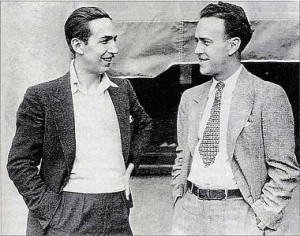The fine folks at the Mid-Missouri Comics Collective asked me for information about the comics history of Columbia, Missouri. Since Eclipse Comics’ offices were located in Columbia for a while, I dashed off an e-mail to cat yronwode, the no-capital-letters-in-her-name former editor-in-chief of Eclipse Comics, to pose a few questions.
That email took me on a trip down memory lane to my first meeting with cat. I was just 15-years-old. My buddies Mark Runyan, Robb Cox, and I just had become aware of a local group of grown-up comics fans who had a club named “Ozark Fandom” near my hometown of Willow Springs, Missouri. Through the mail, the group’s leader – a really nice guy named Chris Rock (but not that Chris Rock) – invited us to a club meeting.
It ended up being one of the most memorable evenings of my life. The meeting was held in a log cabin at the end of a dirt trail in rural Howell County. At that meeting we met Chris, cat, and a number of other local fans, including Ronn Foss who was a pioneer of small press comics fanzines. I have to say that cat was the most dynamic personality of the evening, educating, entertaining, and challenging a trio of pimple-faced adolescents.
At the time, cat was writing a comics news and reviews column in the weekly adzine The Buyer’s Guide for Comics Fandom (now known as the magazine Comics Buyer’s Guide). As a result, she had a boatload of review copies that she gave away at the meetings – including a bunch of small press comics fanzines. Those were the first real amateur comics zines I’d ever seen. The significance of that gift on my life is not measurable. Because of those free zines I discovered a whole new perspective on comics and publishing. My eyes were opened by terrific zines including Bill-Dale Marcinko’s AFTA, David Heath, Jr’s No Sex, and Gene Kehoe’s It’s a Fanzine.
I’m sure it’s impossible for kids in today’s Internet-driven and comics-saturated pop culture to understand, but my friends and I had had almost no direct exposure to other comics fans, let alone involvement in any sort of organized fandom. While Robb, Mark, and I had already been creating our own amateur comic books, cat’s fanzines introduced us to a wonderful, fascinating new world.
Those freebies led to more zines produced by Kirk… and extensive contact with other zine publishers… and comics and articles published by others… and my first professional writing… and my first professional comics work… and to the creation of Comics Career Newsletter itself. By then, cat was editing the Eclipse Comics line and agreed to be interviewed for the CCN‘s first issue.
I haven’t scratched the surface of my wonderful memories of that magical night in 1979 when cat yronwode, Ronn Foss, Chris Rock and the rest of the Ozark Fandom gang through open to doors to comics fandom. Thanks to them all for the first night of the rest of my life.

